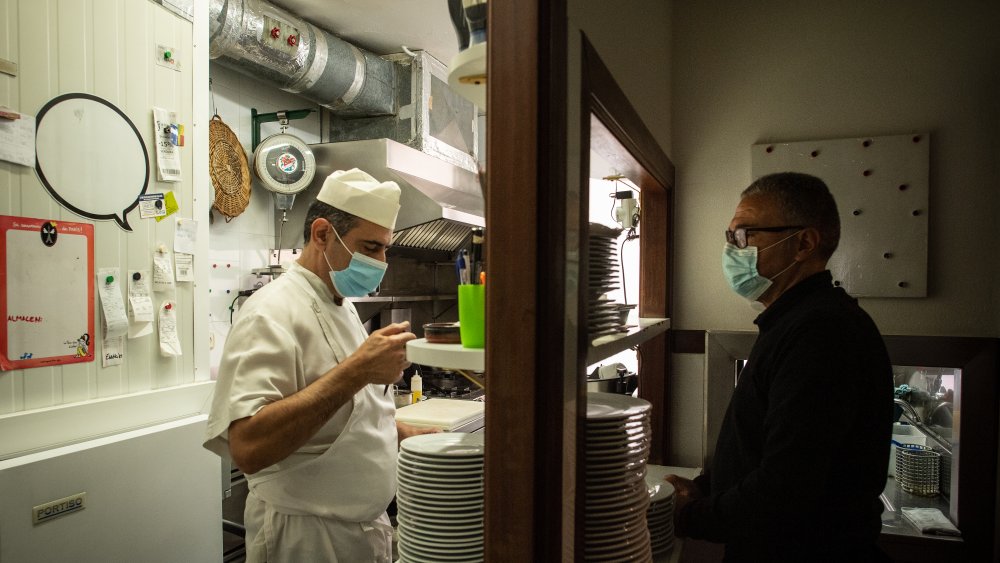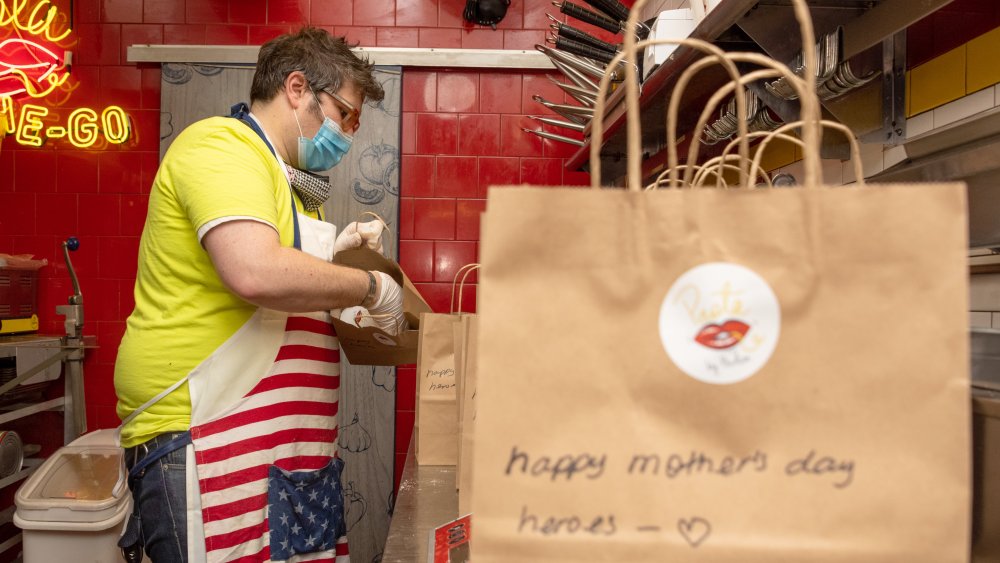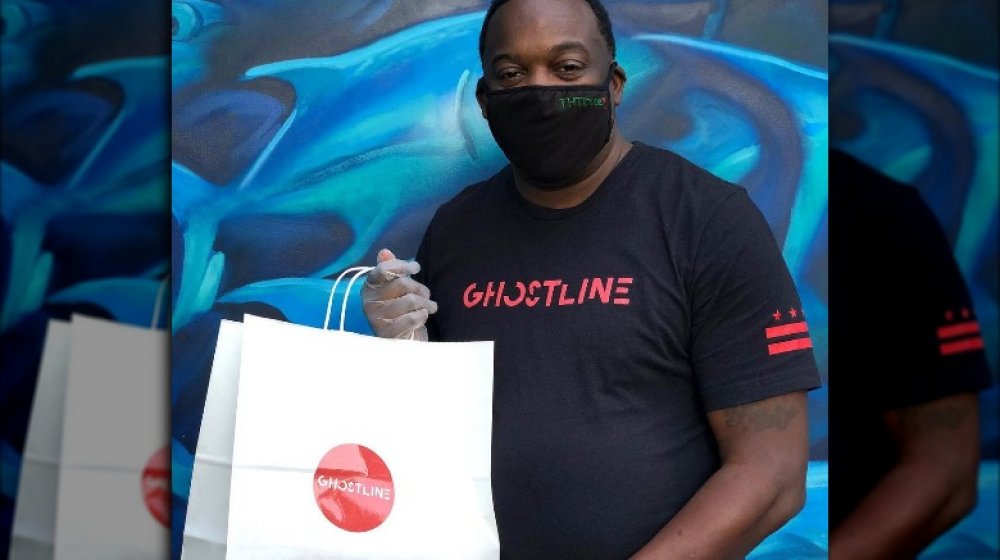The Reason Ghost Kitchens Might Be The Future Of Restaurant Dining
We've been hearing a lot this year about dark stores and ghost kitchens. While these places sound spooky enough, and it is October, they aren't frightful Halloween destinations. Instead, they have everything to do with the scary reality the COVID-19 pandemic has brought to retailers and restaurants. Some Whole Foods and Walmart stores, to name just two, are "dark" in the sense that they aren't open to shoppers and are dedicated to fulfilling online orders (via Fast Company). But what exactly is a ghost kitchen, and how is the concept not only going to help restaurants survive the pandemic but also shape their future?
First, you need to know the state of the restaurant industry in this year of business closures and stay-at-home orders. According to the National Restaurant Association, two-thirds of the restaurant workforce lost their jobs, and restaurant sales will be down $240 billion this year. Much of this was due to the fact that indoor dining was halted at 90,000 restaurants across the U.S. (via The Food Institute). The Independent Restaurant Coalition said recently that unless they are bailed out by the government, 85 percent of independent restaurants could close permanently (via The Washington Post).
Takeout and delivery will continue to be popular after the pandemic
In the short term, restaurants needed to figure out how to make money with their dining rooms closed. Within one week, the Michelin-three-star restaurant Alinea in Chicago converted from $375 dine-in meals to an under-$40 takeout menu (via Fast Company). The family owners of the fine-dining establishment Canlis in Seattle started a delivery service and opened a drive-thru burger joint (via The New York Times). Unfortunately this so-called short term, might not be so short after al. The financial services firm Rabobank recently made a prediction: Restaurants won't see a return to pre-COVID-19 sales levels until the middle or end of 2022 (via FSR).
But something else is going on, too, besides the forced closures of restaurant dining rooms, that might forever change restaurants. People are getting comfortable equating the restaurant experience with takeout or delivery. As Rick Camac, a dean at the Institute of Culinary Education, told The Washington Post, "We now think it's more reasonable to spend $100 on delivery and eat in front of a great movie."
'The heyday of restaurants is done'
This is where the ghost kitchens come in. The perfect example of a ghost kitchen is Ghost Line, which opened August 28 at the site of a former bar in Washington, D.C. (via Eater DC). Restaurateur Aaron Gordon brought together a small group of chefs to prepare their various cuisines under one roof. The old bar's dining room was converted to a bakery and storage space. Since customers never go inside, Gordon didn't have to spend a dime on renovations after he took over the space.
That's the beauty of the ghost kitchen concept, at a time when money is extremely tight for restaurant owners. Expenses are lower because they hire fewer servers, or none at all. (Ghost Line has an outdoor patio with socially distant seating, but Gordon said 80 percent of its business will come from takeout and delivery.) Hosting several high-quality chefs under one roof and keeping the menus simple also reduces overhead costs (via The Washington Post).
Gordon is an early adopter of the ghost kitchen concept. In July, only three ghost-kitchen companies were operating in the U.S., but Gordon thinks ghost kitchens are the future of restaurants. "The days of having 100 people packed into a little bar are pretty much over," Gordon told Eater DC. "I honestly think the heyday of restaurants is done at this point."


